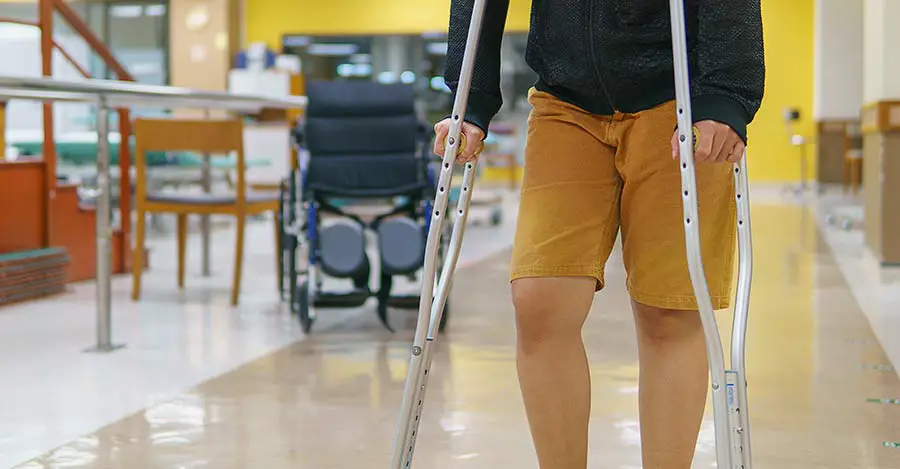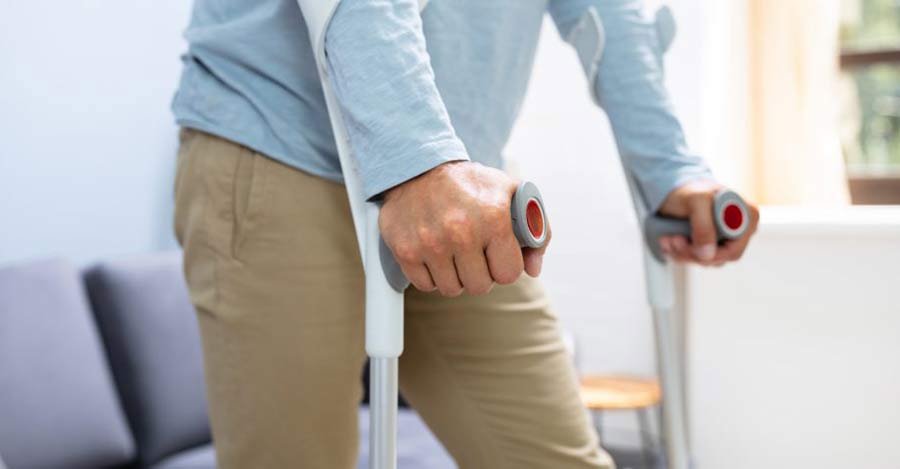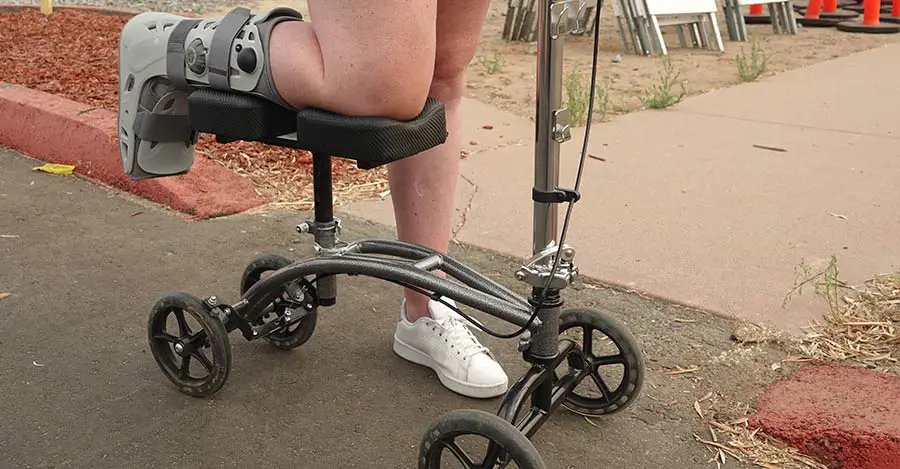Written by Elvira, World Crutches
When you go through a hip surgery, like a hip replacement surgery for example, it is necessary to be cautious. In order for your hip to heal properly, you’ll need to let it rest and avoid applying any tension on the muscles.
A hip surgery will make walking seem impossible, and you are not able to move around freely. Like any other injury along the leg, a hip surgery may restrain you to use mobility-aid devices like crutches.
Table of Contents
Do I Need Crutches After Hip Surgery?

After having a hip surgery, walking may no longer be an easy task. Using crutches after a hip surgery is mandatory, although the duration may vary. It relies on the type of the surgery but also on the condition of the person.
After you go through a surgery along the hip, you’ll face difficulties in doing the slightest of movement. You’ll need a mobility-aid device to walk around the house, climb up starters or even to get off the bed.
It is crucial to avoid putting pressure on the injured hip to ensure a fast and healthy recovery. Crutches will help keep you balanced and keep you from falling, which can cause serious issues.
How To Use Crutches After Hip Surgery?

After a hip surgery, you’ll be required to use crutches for movement. They offer a major boost and help keep any tensions off your injured hip. Using a mobility-aid device for the first time may be a little challenging. However, with some guidance you can enhance your experience drastically and have a smooth ride.
Start by adjusting the crutches you are going to use properly. Adjust the height and leave 1-2 inches of space below your armpit. It is important to not shove the crutches deep against your skin as it could cause irritation. When you’re done adjusting the crutches, take the handles within your grip and lean on your hands, not your armpit.
You’ll need to depend on your strong leg for movement, and you should start by taking small steps. With your grip firmly locked, place the tip of the crutches one foot ahead of you. Lean on the crutches for support, and take a step with your strong leg. Avoid applying any pressure on the injured leg and make sure you proceed slowly and carefully.
Using Stairs While On Crutches?
When you have to depend on crutches for movement, climbing up and down the stairs may not be that easy. It is advisable to avoid stairs and not attempt climbing one until you feel comfortable enough using crutches.
If you have to climb a stair, simply place your crutches near the step and make sure it’s within reach. Step with your strong leg first, then bring the injured one up.
To climb down the stairs, place the crutches on the step below. First, follow with your strong leg then with the injured leg. If the stairs are lined up with handrails then you can hold the crutches on one arm and use the handrail.
How To Speed Up Your Recovery After Hip Surgery?
As it’s mentioned, recovery depends on different factors like age and your physical condition. Some people may not have to use crutches for 4 weeks, while others may even take longer. To ensure optimum recovery there are several suggestions to take into consideration.
Use crutches and take your time adjusting to them. Take smaller steps and be careful to not engage your injured leg. Be cautious and avoid any sudden moves. During the first weeks of recovery you may have to avoid flexing your leg and keep it still.
Even though you’ll be required to avoid engaging your leg in any activity, developing a light exercise routine may be very beneficial. Due to the prolonged rest time that your hip will require, muscles may get a little stiff.
A light workout routine will activate your muscles and help your hip adjust back to its normal state. These exercises might not directly target the hips; however, they promote more blood flow. Working out will also help you maintain a healthy body weight which can also promote a fast recovery. Here’s some good exercise to start with:
- Hip abduction: as you stand up right, slide your leg up to the side slowly, and back to the starting point. Keep your knee straight as you do 10 repetitions for 4 sets.
- Static quads: lay down on your back, roll a towel and place it underneath your knee. Press on the towel with your knee to get your foot off the bed and your leg muscle activated. Hold on for 5 seconds. Do 4 sets of 10.
- Ankle pumps: Lay down or sit on a chair and simply stretch your ankle up and down. Do 3 sets of 20.


Making home preparations before going through a hip surgery is also a good strategy. A comfortable recovery environment will speed up the healing process and make things a lot easier for you!
If your room is upstairs, you may want to take your bed to the first floor, so you could avoid using stairs. Make sure you adjust it to the right height and add extra cushioning to keep your leg comfortable. You can also install grab bars inside your bathroom, near the toilet and the tub to make using them extra easier.
Consider Using An Alternative!

If you find yourself struggling to use standard crutches, you can always change to an alternative. Nowadays, you can find many types of mobility-aid devices. It is preferable to use a device that minimizes effort and is comfortable when in-use.
Try using forearm crutches, they are lightweight and easy to maneuver around. It is also possible to use a wheelchair, which will help with keeping your hip well rested and safe. As you make more progress recovering, you may try using a cane to walk around more freely.
Final Words
Recovering from a hip surgery takes time and patience. For the injured hip to heal, you must not put pressure on it and must keep it rested. Avoid any rushed up moves, twist or turns and take slow and small steps.
It is necessary to rely on crutches after a hip surgery to allow for a fast healthy recovery. You can also try different light exercises and moves to help speed the recovery process. Make sure you follow your doctor’s rules and check before you decide to put them aside.
